As a ray of peace and simplicity in a world where excess is common, minimalism shines brightly. Adopting a minimalist style for the interior design of your house not only results in a calm environment but also helps you live a more purposeful and clear life. Your home may become a peaceful haven if you learn to master minimalism, from decluttering to making mindful decor decisions. We will go over the fundamentals of minimalist design in this tutorial and show you how to incorporate them into every area of your house.
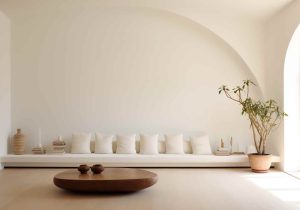
It is never tough to be a minimalist. Though fresh interpretations of the maxim “less is more” appear to emerge every few years, minimalism is a timeless style in the world of design, not a fad. Particularly tempting about minimalist living rooms is how much room there is for disarray. A minimalist living room arrangement is peaceful, uncluttered, and soothing. It is interesting to note, nevertheless, that designers frequently highlight the features of minimalist living spaces rather than their shortcomings.
It takes skill to design a minimalist room that is nonetheless cozy, welcoming, and uniquely you. There are several methods to design a serene, minimalist room, such as highlighting architectural elements, adding textural accessories, and thoughtfully choosing bookshelves.
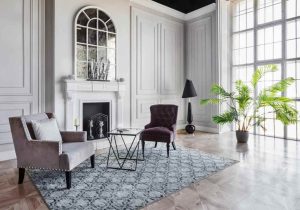
Declutter first: Reducing your belongings to what is necessary is the first step towards minimalism. Examine every space carefully and consider what enhances your life. Anything that does not make you happy or fulfils a purpose should be donated or thrown away. Making room in your house for mindfulness and intentionality begins with decluttering.
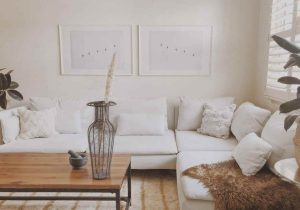
Accept Simple Silhouettes and Clean Lines: Clean lines and clutter-free areas define minimalist interior design. Select furniture with clean, uncomplicated patterns; stay away from elaborate accents and superfluous frills. Choose muted hues like white, beige, or gray to foster an air of spaciousness and serenity.

Form comes second in minimalist design. Every piece of furniture should have a functional function and no extraneous details. To optimize space and reduce clutter, make an investment in multipurpose pieces such as modular shelving systems or storage ottomans.
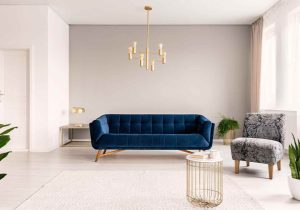
Taking use of natural light in your home is essential for minimalist design. To create a light and airy feeling in your rooms, remove heavy curtains or blinds. Consider sheer or translucent window treatments that allow light to pass through if privacy is an issue.
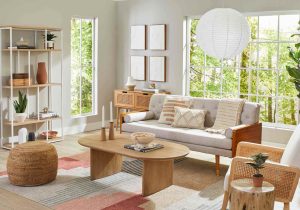
Less is more when it comes to décor in minimalist design. Select a few well-chosen items that go well with the design theme of your house. Go for organic materials like stone, metal, or wood, as well as straightforward geometric designs. Include some greenery to breathe life and vitality into your area by adding some plants.

To prevent a minimalist design from seeming cold or unduly harsh, balance must be achieved. Organize your furnishings and décor to provide harmony and flow throughout your house. Keep an eye out for negative space and refrain from packing your home with too many items.

Quality, not quantity, is the focus of minimalism. Invest in long-lasting, well-made products for your home rather than accumulating cheap, disposable stuff. Select long-lasting furnishings and décor that offer classic style and durability.
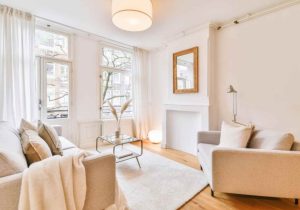
A continual effort is needed to keep clutter from reentering a minimalist environment. Organize and declutter a weekly ritual by allocating time to clean up and reevaluate your possessions. Your minimalist heaven can stay calm and clutter-free by being careful about what you bring into it and by periodically getting rid of anything you do not need. Examine the spaces in your house. Examine every piece of furniture in every room. Lift your gaze to the pictures on the wall and the items resting on your tabletops. Does every detail have to be present? Or is it possible to eliminate some of them? The main goal of minimalism is to simplify your design and get rid of extraneous details and frills. Additionally, a lot of houses are adopting minimalist design as a revitalising approach to tidy, orderly, and clutter-free living.
In summary, mastering minimalism in interior design is about more than simply aesthetics; it is about making a place that expresses your beliefs and improves your quality of life. Decluttering, becoming minimalist, and emphasizing quality over quantity can help you turn your house into a tranquil haven where you can unwind and rejuvenate. Take a lesson from the principles of minimalist design and begin decluttering your area immediately.
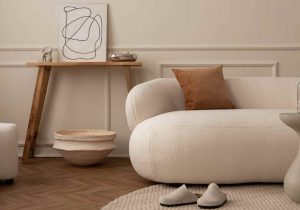
The minimalist decorating style emphasizes moderation, with equal emphasis on lighting, space, and things. To get this look, you must reduce your furniture to the absolute minimum, leaving you with a carefully chosen collection of pieces that have the greatest possible impact. This style is bold, practical, and incredibly memorable—far from dull.